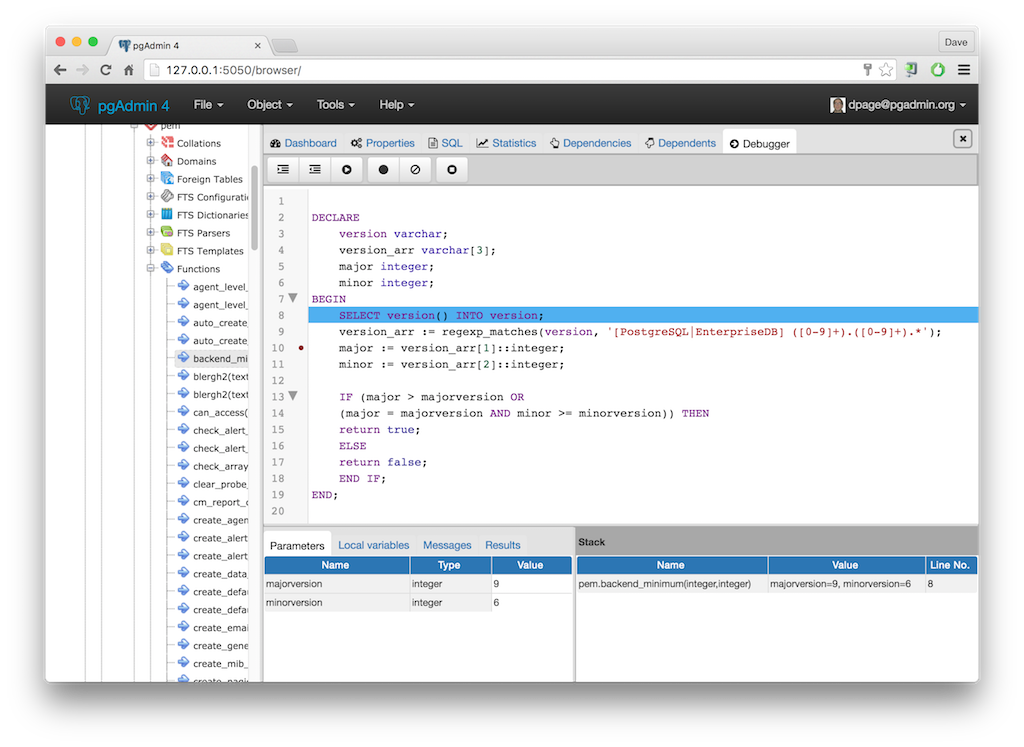
- Pgadmin 4 cannot create and connect to server how to#
- Pgadmin 4 cannot create and connect to server install#
- Pgadmin 4 cannot create and connect to server code#
- Pgadmin 4 cannot create and connect to server password#
# close the communication with the PostgreSQLĮxcept (Exception, psycopg2.DatabaseError) as error:įirst, read database connection parameters from the database.ini file. # display the PostgreSQL database server version Print('Connecting to the PostgreSQL database.') """ Connect to the PostgreSQL database server """ The following connect() function connects to the suppliers database and prints out the PostgreSQL database version. Raise Exception('Section file'.format(section, filename)) The config() function is placed in the config.py file:ĭef config(filename='database.ini', section='postgresql'): The following config() function read the database.ini file and returns connection parameters. gitignore file will be like this: database.ini gitignore file to not committing the sensitive information to the public repo like github. Notice that if you git, you need to add the database.ini to the.
Pgadmin 4 cannot create and connect to server code#
The following shows the contents of the database.ini file: īy using the database.ini, you can change the PostgreSQL connection parameters when you move the code to the production environment without modifying the code. To make it more convenient, you can use a configuration file to store all connection parameters. Port: the port number that defaults to 5432 if it is not provided. Host: database server address e.g., localhost or an IP address. The following is the list of the connection parameters:ĭatabase: the name of the database that you want to connect. Or you can use a list of keyword arguments: conn = nnect( To call the connect() function, you specify the PostgreSQL database parameters as a connection string and pass it to the function like this: conn = nnect("dbname=suppliers user=postgres password=postgres") By using the connection object, you can create a new cursor to execute any SQL statements. The connect() function creates a new database session and returns a new instance of the connection class. To connect to the suppliers database, you use the connect() function of the psycopg2 module. CREATE DATABASE suppliers Connect to the PostgreSQL database using the psycopg2 Second, use the following statement to create a new database named suppliers in the PostgreSQL database server.
Pgadmin 4 cannot create and connect to server install#
Sudo python setup.py install Create a new databaseįirst, log in to the PostgreSQL database server using any client tool such as pgAdmin or psql. If you have downloaded the source package into your computer, you can use the setup.py as follows: python setup.py build
Pgadmin 4 cannot create and connect to server password#
Pgadmin 4 cannot create and connect to server how to#



# sudo firewall-cmd -permanent -add-port=5432/tcp – By default, PostgreSQL server listens at the port 5432, to allow the remote access we have to open the 5432 port # CentOS 7 / RHEL 7 # sudo systemctl restart postgresql-11 # FOR Postgresql 11 # sudo systemctl restart postgresql-10 # FOR Postgresql 10 – After making changes, we have to restart the PostgreSQL server # sudo systemctl restart postgresql # sudo vi /var/lib/pgsql/11/data/pg_hba.conf # FOR Postgresql 11 # sudo vi /var/lib/pgsql/10/data/pg_hba.conf # FOR Postgresql 10 – Add the following line in the pg_hba.conf file to allow access to all databases for all users with an encrypted password: # sudo vi /etc/postgresql/9.6/main/pg_hba.conf # defaults to 'localhost' use '*' for all Listen_addresses = '*' # what IP address(es) to listen on

# sudo vi /var/lib/pgsql/11/data/nf # Postgresql 11 # sudo vi /var/lib/pgsql/10/data/nf # Postgresql 10 # sudo vi /etc/postgresql/9.6/main/nf # Postgresql 9.6 – Edit this line in your nf file as shown below.


 0 kommentar(er)
0 kommentar(er)
